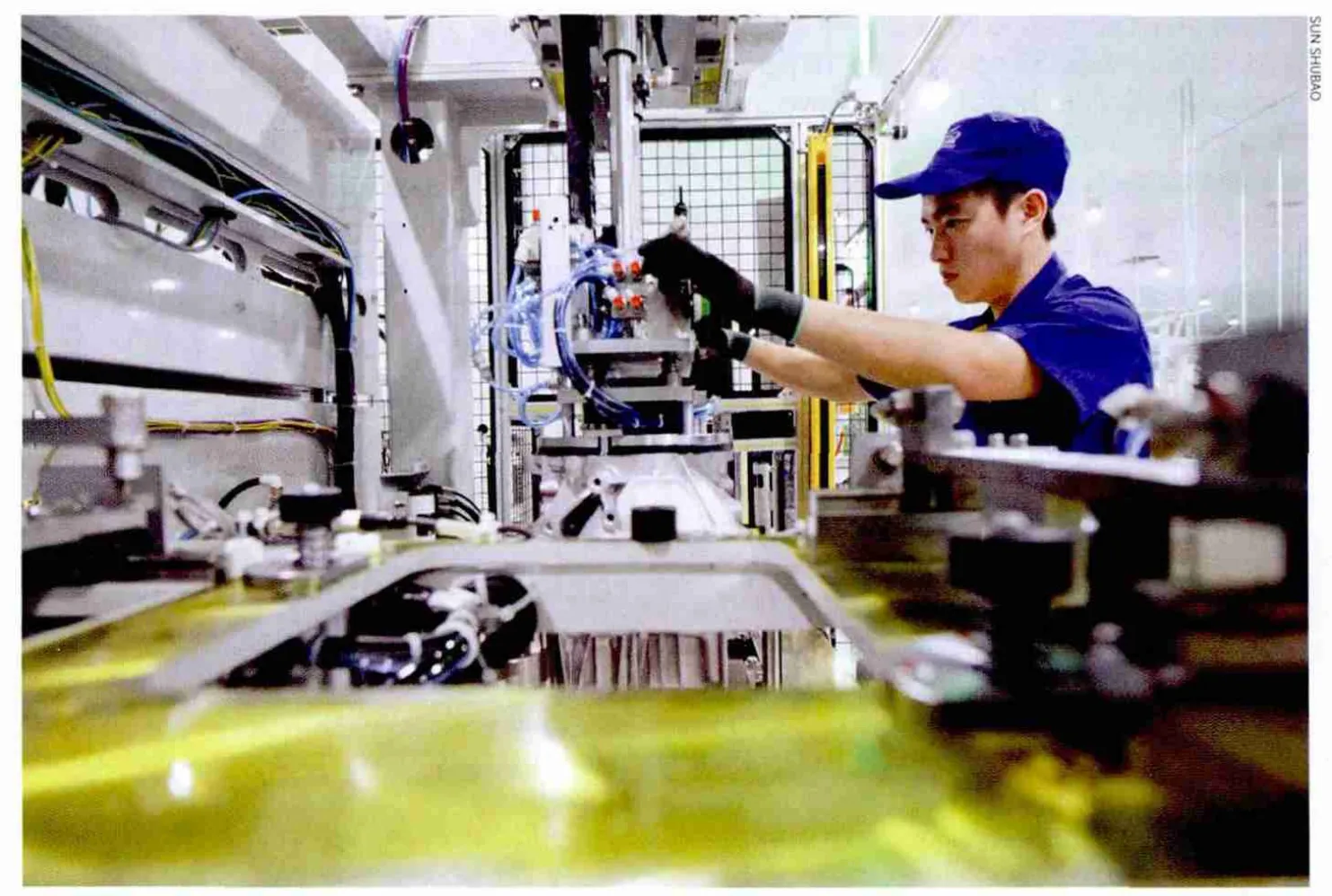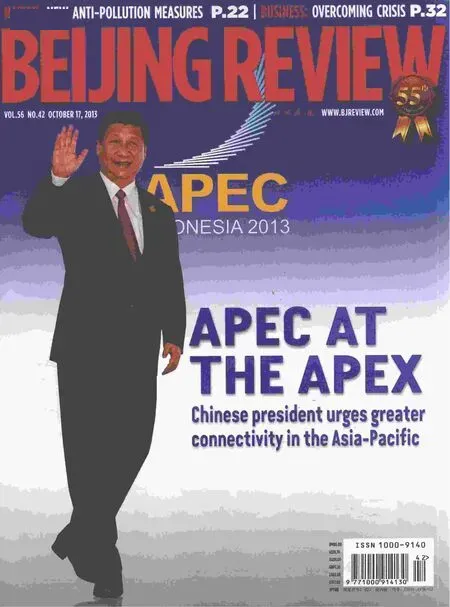A Crisis That Brought Good
2013-03-15LanXinzhen
The economic woes from the global financial crisis may have been exactly what China needed By Lan Xinzhen
The U.S. economy is recovering, an indication that the source of the 2008 global financial crisis is slowly on the up and the recovery of the world economy is accelerating. Many minds have begun to re fl ect on the crisis and its ensuing pains in order to understand how various countries coped with the crisis and how they plan to prepare for the next.
Two days are particularly unforgettable in the last five years. First, September 15, 2008,when the 150-year-old Lehman Brothers filed for bankruptcy protection, which experts say unleashed the global economic crisis. Second, November 5, 2008, when China launched its 4-trillion-yuan ($650-billion) stimulus package to cope with the impact of the crisis. China became the first country in the world to issue such a massive measure to combat the crisis and the first major country to recover from it.
During the past five years, the global fi nancial crisis did affect the Chinese economy, but it also had a positive impact: It forced the Chinese economy to develop in a more sound and sustainable way.
The impact of the global financial crisis on the Chinese economy began with exports.China’s exports had already been suffering from a harsh winter in the first half of 2008.According to the General Administration of Customs, China’s export growth stood at 28.1 percent in May 2008, but had dropped after that. In November 2008, exports declined by 2.2 percent, and the drop in export orders continued until November 2009. China’s coastal areas are home to the highest concentration of export-driven companies, but a large number of them were forced to shut down due to declining orders since the latter half of 2008.
At that time foreign trade and investment were the major forces driving up China’s economy, therefore the decline of foreign trade adversely impacted the country’s economic growth. In the first quarter of 2008 China recorded growth of 11.3 percent, but a year later the growth dropped to 6.6 percent.
In November 2008 the Chinese Government launched the stimulus package and strengthened support to expand exports and consumption. The measures worked.Foreign trade resumed growth in November 2009. In the first quarter of 2010, China saw double-digit growth once more, with the growth rate reaching 12.1 percent. Unlike in Europe and the United States, China only witnessed a brief battering of its economy before its recovery began.
The positive side
After the Chinese economy recovered from the crisis, policymakers began to re fl ect on the country’s economic model, its capability to combat risks and its overall sound development. The conclusion was unsurprising:China cannot continue to rely on a pattern of investment and foreign trade to sustain growth and must shift the gears of growth toward consumption, now a top priority of the Central Government.
To be fair, the Chinese Government realized the need to readjust the country’s economic structure back in 2003, but failed to do so out of fears of a decline in economic growth and a rising unemployment rate. In other words, the Chinese economy wasn’t yet ready to transform.
But the outburst of the global financial crisis toughened the government’s resolve to change course and support new pillars of growth. When the economy started recovering,China issued 10 revitalization plans for a number of industries, including automobile, steel,textile, electronic information and shipbuilding.Moreover, the government granted subsidies for automobile and home appliance purchases to boost consumption. After the new leadership took of fi ce in March, government involvement in industrial affairs has been cut back, interest rates have been further liberalized and efforts have been made to encourage more foreign and private investment in sectors once untouchable.
The results are expected: China’s economic growth slowed from 10.7 percent in the third quarter of 2010 to 7.6 percent in the second quarter this year. In other words, the Chinese economy is suffering from the pains of restructuring. But it is in a healthier state than before the global fi nancial crisis.
The crisis also impacted China’s economy in two important ways. First, it eliminated high inflation, which stood at 8.5 percent in April 2008, more than twice the government’s target of 4 percent. To lower in fl ation, China’s central bank raised its benchmark interest rate six times in 2007, an unprecedented move in the country’s history. However, the inflation rate remained high. The global fi nancial crisis soon hacked away at inflation, with the rate even falling below zero from February to September 2009. Second, China’s economy significantly grew. In 2007, GDP of the United States was four times that of China’s, but in 2012 the gap was narrowed to 1.9 times.
Crisis coming to China?
The global financial crisis that began in the United States has made Chinese economists nervous: Will the Chinese financial sector,which is increasingly becoming integrated with the global financial market, witness a similar financial crisis as the one in the United States? The concerns are real. China is looking a lot like the United States before the global financial crisis. Soaring credit growth and real estate prices—two factors that led to the crash in 2008—are alive and fl ourishing in China.

MAKE IT FASTER: A worker inside the Weifang High and New Technology Zone of Shandong Province assembles automatic transmissions for new vehicles. The fi nancial crisis forces China to revamp its industrial structure
What is more disturbing is the risk brought by China’s action to cope with the fi nancial crisis. Zhang Ping, Deputy Director of the Institute of Economics of the Chinese Academy of Social Sciences (CASS), said that after China launched its anti-crisis measures, the friction between financial uncertainties and industrial restructuring has been on the rise. China’s anti-crisis policy in 2008 encouraged fi nancial institutions and all investors to engage in long-term investment, spending huge amounts of money on high-speed railways, infrastructure and real estate projects. Once the funds outstanding for foreign exchange decline and the central bank does not offer a timely remedy, the financial crisis would occur.
Zhang Ming, a researcher from the Institute of World Economics and Politics of the CASS,believes China’s general leverage ratio is now under control. Its ratio of total debt against GDP is 200 percent, which puts it in the middle of the pack among world countries. But Chinese companies have too much debt, accounting for 100-150 percent of GDP. Corresponding to the high corporate debt is surplus capacity, which may cause a financial crisis when external demand weakens.
Some others think financial crisis won’t happen in China, at least within next few years. Xiang Songzuo, chief economist at the Agricultural Bank of China, thinks a financial crisis is unlikely. First, the Chinese Government has strict control of the fi nancial and economic sector, while a fi nancial crisis only happens when the government has no control. Second, the Chinese Government owns a huge amount of state-owned assets,including powerful state-owned enterprises and valuable state-owned land, hence it should be able to check any crisis factor in the bud. More importantly, China’s financial industry, including its shadow banking system, is still oriented toward the real economy. Therefore, China is unlikely to see the kinds of fi nancial bubbles that were present in Europe and the United States, where the fi nancial industry was divorced from the real economy.
Economists failed to forecast the financial crisis in 2008, and their predictions of China failing into the same rut are uncertain. Still, China’s financial sector needs plenty of reform or it could face a terrible fate. ■
